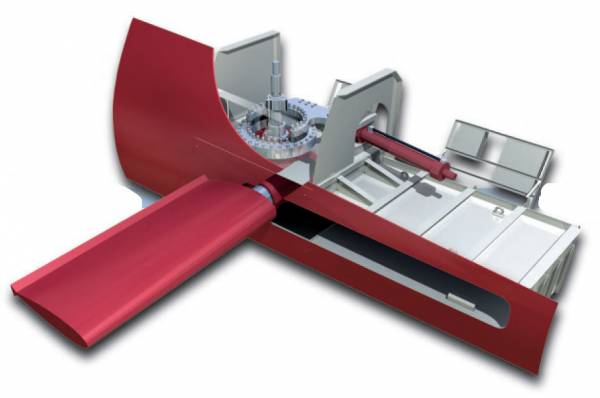Table Of Content

And till now, Dyna-foil stabilizers are a more efficient Quantum Stabilization system. The larger cruise needs stabilizers on each side to maintain the center of gravity and avoid rolling. Active stabilizers include fins that change the angle to produce buoyancy force to stabilize the cruise. Also, every ship has a handful of unique staterooms that often come with a slightly lower price tag because they don’t match other cabins in the category. It could be a balcony cabin with a smaller porthole-like opening in the ship’s hull or an odd-shaped interior cabin on the same plush hallway with the ship’s fanciest suites. Cruisers with a sensitivity to motion and/or are prone to seasickness will do best midship (midway between front and back) and on a low deck.
Types Of Cruise Ship Stabilizer
Stabilizers play a vital role in enhancing the stability of cruise ships, reducing motion sickness, and improving overall comfort for passengers. Gyroscopic stabilizers are a unique type of cruise ship stabilizers that utilize the principle of a gyroscope to counteract the rolling motion of the ship. These advanced stabilizing systems are particularly effective at reducing roll motion at high speeds. One of the most common types, fin stabilizers, work by utilizing lift and downward force. As the ship rolls, the fin stabilizers extend horizontally from the ship’s hull and create lift on one side while generating a downward force on the other.
What Do Cruise Ship Stabilizers Look Like
World's Largest Cruise Ship Has Twenty Decks, But Barely Any Of It Sits Below The Water - Jalopnik
World's Largest Cruise Ship Has Twenty Decks, But Barely Any Of It Sits Below The Water.
Posted: Wed, 17 Jan 2024 08:00:00 GMT [source]
Regardless of the type, stabilizers work in real-time, continuously adjusting and adapting to the changing external forces. They are typically controlled by sophisticated systems and sensors that monitor the ship’s movement and sea conditions. These systems provide data to the stabilizers, allowing them to respond quickly and effectively to the rolling motion. In order to reduce rolling at sea and improve the experience of passengers onboard, cruise ships are equipped with stabilizers. However, it is a more complex system and includes both passive and active stabilizers. There are a number of factors to consider when choosing a cruise ship with the best stabilizers.
Impact of Stabilizers on Cruise Experience
One of the greatest concerns of first time cruisers is the fear of getting seasick. Anyone who has experienced sea sickness will sympathise, as it is a condition that can ruin a voyage. Fortunately, modern cruise ships utilise the latest in technology to minimise the rocking and rolling motion of the vessel, greatly diminishing the chances of passengers being adversely affected. In conclusion, the maintenance and inspection of stabilizers on cruise ships are vital for their optimal performance and the safety of passengers and crew. Regular lubrication and inspections help minimize wear and identify potential issues, while efficient troubleshooting and repair procedures ensure prompt resolution of any problems that may arise.
New luxury cruise ship sailing the world's roughest waters without stabilizers is slated for repairs - The Points Guy
New luxury cruise ship sailing the world's roughest waters without stabilizers is slated for repairs.
Posted: Mon, 23 Jan 2023 08:00:00 GMT [source]
As cruise ships continue to innovate and advance, the role of stabilizers remains essential in providing an exceptional maritime experience. The selection and integration of these systems are carefully considered during the ship’s design and construction process to ensure optimal stability, safety, and passenger satisfaction. One of the advantages of underwater foil stabilizers is their capability to provide stabilization in a wide range of sea conditions. Whether the ship is facing moderate swells or rough waves, these stabilizers can effectively minimize roll motion and maintain stability. One of the significant advantages of gyroscopic stabilizers is their ability to provide swift and precise stabilization. They can react to changes in the ship’s motion almost instantaneously, continuously adjusting the flywheel rotation to counteract any roll.
I have a lot of Viking in me and don't get seasick, but I have fallen down in rough conditions. “It’s best that guests who know they are prone to seasickness consult their doctor prior to departure,” Dr. Shore says. If your personal physician thinks it’s appropriate, he or she can prescribe a patch that you can wear to prevent the onset of seasickness. “For prescription patches like Transderm Scop, it’s important for it to be applied prior to boarding to be effective,” he adds. Near to completion of a vessel, an inclining test is carried out to assess the stability of the vessel. The primary aim of the experiment is to find the center of gravity, and the metacentric height (used as an indicator of stability), and further estimate the stability of the vessel.
This, in turn, contributes to a more comfortable and enjoyable sailing experience for passengers while maintaining high safety standards. Stabilizers, in the context of cruise ships, refer to a set of mechanical devices that help reduce the rolling motion of the vessel caused by external forces such as waves, wind, and currents. They are typically located on the sides of the ship, below the waterline. Stabilisers on cruise ships perform a function similar to that of wing flaps on an airplane.

Does Cruise Use Gyroscopic Stabilizers
Yes, cruise ships can sail safely without stabilizers, but when it comes to comfort level, you won’t experience it as there is so much rolling motion without stabilizers. They are retractable, and the cruise captain turns them off when the sea is calm. This stabilizer saves fuel and is more efficient than gyroscopes or passive stabilizers.
Quite well aware of the definition of Gross Tonnage (GRT is an unused term since 1982). I was using the tonnage of the various ships to delineate size, not weight, as the poster had said that the new, larger ships had a smaller draft. I'm not sure they will dampen rolling by 85%, that sounds like a manufacturer's claim, but they can be very effective in most conditions.
The main purpose of these stabilizers is to keep the cruise upright during extreme weather conditions, minimize rolling, and prevent them from sinking. While sailing, you won’t feel synchronous rolling even in bad weather conditions, and this is because the stabilizers are balancing the center of gravity. Many new cruises ask about cruise ship stabilizers, what are stabilizers, and how they work. One of the advantages of fixed stabilizers is their simplicity and reliability.
By constantly monitoring the ship’s movement and using hydraulic systems to adjust the fins, active fin stabilizers provide enhanced stability and comfort for passengers, especially in rough seas. In summary, stabilizers on cruise ships work by minimizing roll motion, counteracting wave forces, and utilizing gyroscopic effects. Active fin stabilizers and retractable stabilizers provide additional resistance against the water and waves, reducing the roll motion and maintaining stability. Gyroscopic stabilizers, on the other hand, utilize spinning flywheels to counteract the ship’s roll motion. By working together, these stabilizer systems ensure a comfortable and pleasant sailing experience for passengers. In summary, cruise ships employ a range of stabilizer types to ensure a smooth and stable sailing experience.
Fins are the favored stabilizers on cruise ships in these modern times, with some opting for other variants such as zero-speed stabilizers. Comfort is a top priority for cruise ship operators, ensuring that passengers have a pleasant and enjoyable journey. Stabilizers significantly contribute to the overall comfort of passengers by reducing the ship’s movements and creating a more stable environment. When cruising through the open seas, cruise ships can encounter rough and challenging conditions.
In a recent 2o22 study of the efficacy of a standard fin stabilizer, it was revealed that it imparts additional resistance to the waves by close to 20% in calm water conditions. In more moderate to choppier waves, though, the resistance is a lot lower. Usually, the angling of the fins greatly impacts the resistance they create as well. For example, some studies have shown that angles up to 15° resulted in better resistance. In the end, though, it’s crucial to find the right angle for the fins to bring about the desired stability benefits. The cabins that are lower down and closer to the middle of the vessel experience much less movement that higher cabins toward the front or back of the ship.
If your preference is to stay in a non-modified stateroom, you can still rely on the expertise of the design engineers, who generally place modified cruise cabins near the central elevators. Gyroscopic stabilizers consist of spinning flywheels that are mounted horizontally within the ship’s hull. These flywheels are connected to a computerized control system that constantly monitors the ship’s movement and adjusts the rotation of the flywheels accordingly. I know of several ships that have two sets of stabilizers, so its not just ocean liners.

No comments:
Post a Comment